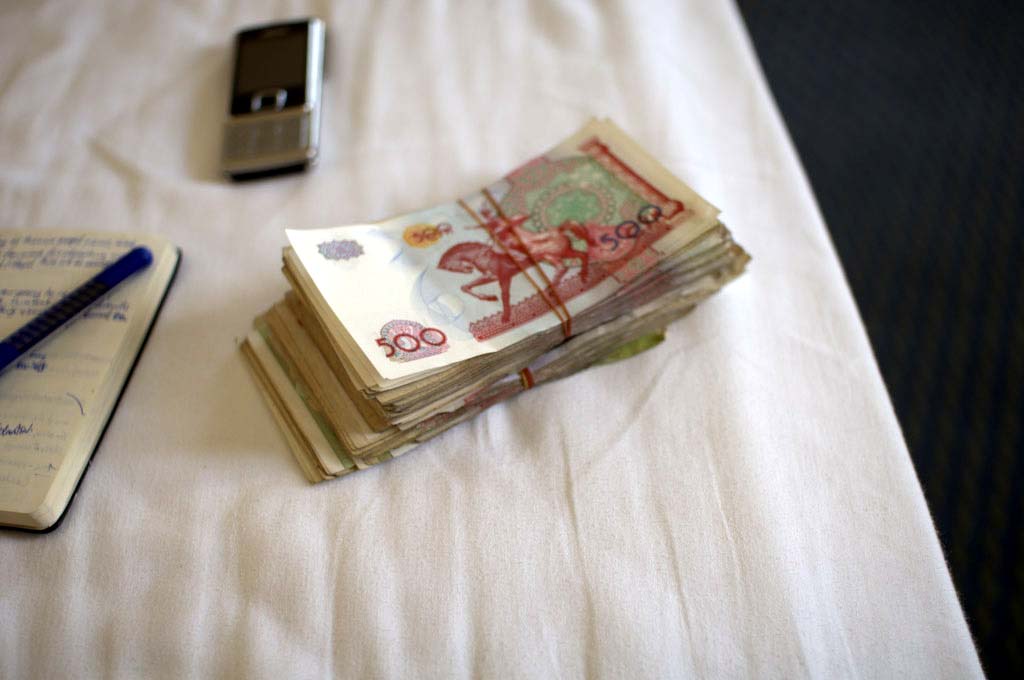One of the cultural quirks of shoppin’ large in Uzbekistan is the physical volume of cash required to complete a transaction. In a country with limited credit and debit card penetration it can take a couple of minutes to reel off the notes in a upscale restaurant, buying a flight means carrying a bag full of cash. The value of 20,000 Uzbekistan Sum, above? About 10.7 Euro.
For someone observing the transaction, to what extent does the process of completing a transaction provides clues to what is being transacted: its value; its relative importance to the buyer or seller; legitimacy or implied legitimacy; whether settlement is agreed? Parameters to keep an eye on include: how the currency is transported; the volume of notes and coins changing hands; whether they are forthcoming from one or multiple locations; the context and manner of the hand-over; the extent that the buyer and seller check, double-check the transaction; whether receipts are forthcoming; the kind of receipt; and body language before, during and after the transaction.
For physical or physical/digital transactions – what makes for an appropriate transaction signature in what contexts?
Related: money (and phone) carrying habits for a range of cultures, infrastructure support to shred transaction receipts in Japan, motivations for retaining receipts from Brazil to Tibet.
